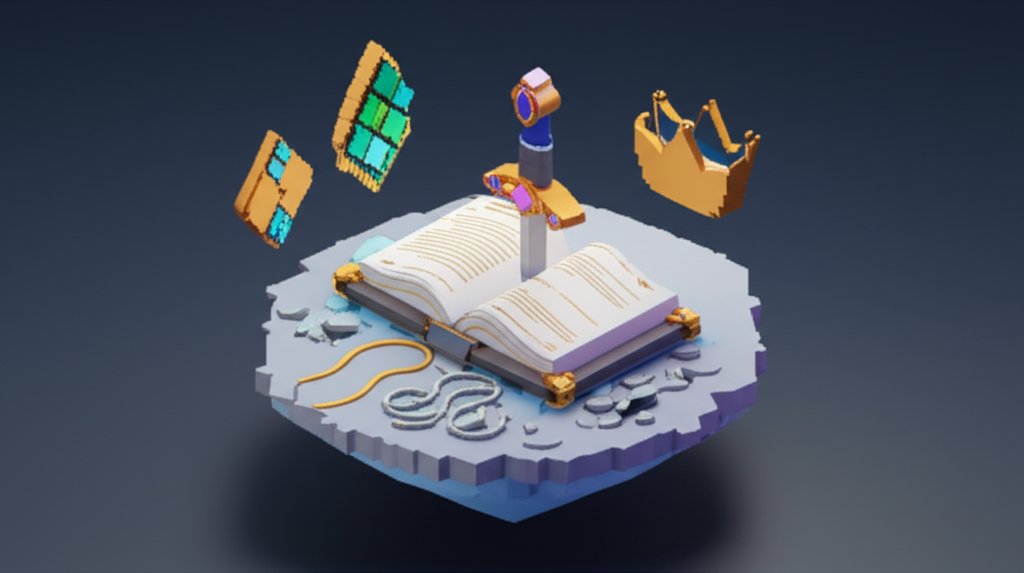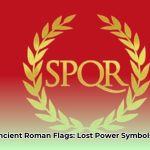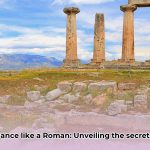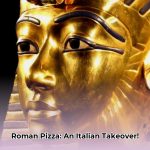Step into the shadows where history intertwines with myth, and whispers of ancient power cling to the very air. While legendary swords often claim the spotlight, a more intimate, yet equally formidable weapon has carved its own indelible mark across cultures and ages: the dagger. These handheld marvels, often infused with divine might or dark magic, are not mere tools of combat but anchors of epic tales. From the gleaming hilt that grants invisibility to the blade that embodies a hero’s unwavering spirit, we embark on a thrilling quest to uncover the most famous daggers in mythology, exploring their origins, astonishing powers, and enduring significance. Prepare to be enchanted by the mythical daggers that shaped destinies and etched their names into the very fabric of legend.
Among the pantheon of Arthurian artifacts, while Excalibur shines brightest, a lesser-known but equally potent weapon belongs to King Arthur himself, and you can read more about these famous daggers on our website.
Unearthing the Power of Famous Daggers in Mythology
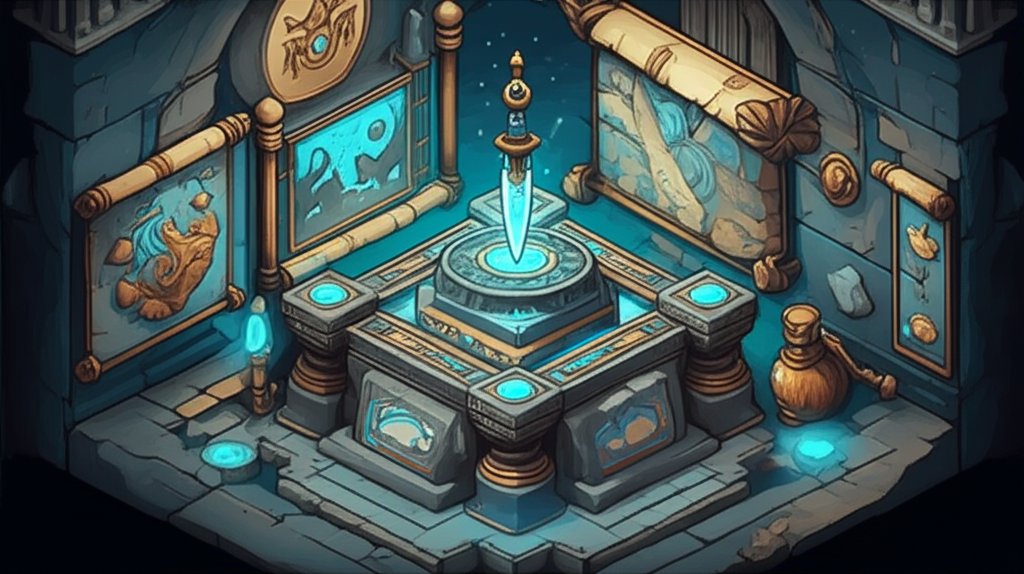
The allure of a mythical dagger lies in its concentrated power. Unlike grand swords, daggers are weapons of precision, intimacy, and often, intrigue. They are wielded in moments of hidden treachery, decisive sacrifice, or swift, heroic justice. Across countless mythologies, these blades transcend their physical form, becoming symbols of their wielder’s fate, divine intervention, or extraordinary abilities. Each famous dagger tells a story of culture, belief, and the deep human fascination with power, both tangible and supernatural.
What elevates a mere blade to a legendary artifact? It’s often a combination of its divine creation, the extraordinary feats performed with it, or the mystical properties it possesses. These daggers are not just steel and magic; they are extensions of gods, heroes, and villains, embodying the very essence of their legends. We’ll delve into some of the most iconic examples, beginning with a blade steeped in Arthurian lore.
Carnwennan Dagger: King Arthur’s Blade of Shadows
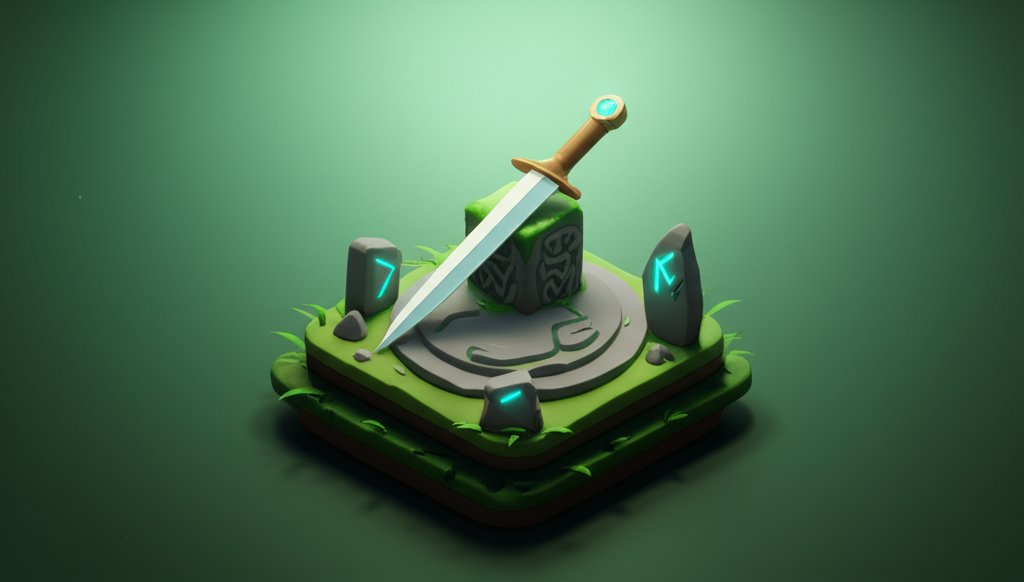
Among the pantheon of Arthurian artifacts, while Excalibur shines brightest, a lesser-known but equally potent weapon belongs to King Arthur himself: the Carnwennan dagger. This compact blade, whose name means “Little White Hilt” in Welsh, holds a unique place in the early Welsh traditions of the legendary king, granting him powers far beyond ordinary men.
Origins in Welsh Lore
The Carnwennan dagger first appears in the ancient Welsh tale Culhwch and Olwen, a foundational text of Arthurian legend written down in the 11th century, though its roots are far older. In this narrative, Carnwennan is counted among Arthur’s most prized possessions, deemed too sacred to be given away, even to the hero Culhwch. This immediately establishes its profound importance and unique status within Arthur’s arsenal.
Further confirmation of its sacred nature comes from the Welsh Triads, a collection of medieval Welsh texts that categorize figures and objects into groups of three. Here, Carnwennan is listed alongside Arthur’s spear Rhongomyniad and his sword Caledfwlch (the Welsh precursor to Excalibur) as one of the “sacred weapons that God had given him.” This divine provenance underscores its mystical properties and sets it apart from common weaponry.
The Power of Invisibility
The most renowned attribute of the Carnwennan dagger is its ability to cloak its wielder in invisibility. In Culhwch and Olwen, Arthur famously uses it to great effect, specifically to dispatch the formidable witch Orddu, the daughter of the witch Orwen. By slicing Orddu in half with Carnwennan, Arthur showcases not only the dagger’s lethal efficacy but also its capacity to aid him in confronting supernatural threats, making his movements unseen and his strikes unexpected.
This power of invisibility transforms Arthur from a conventional warrior into an ethereal force, capable of navigating perilous situations undetected and striking from unexpected angles. It’s a power that suggests cunning, strategic advantage, and a touch of the otherworldly, distinguishing Carnwennan from blunt force weapons.
Carnwennan’s Role in Arthurian Legend
While not as central to Arthur’s narrative as Excalibur, the Carnwennan dagger plays a pivotal role in demonstrating Arthur’s broader capabilities and the mystical elements underpinning his legend. It highlights that Arthur was not just a king of justice and chivalry, but also a figure connected to ancient magic and divine favor.
Its inclusion in the earliest Welsh tales suggests that even before the more widely known European Arthurian romances developed, Arthur was envisioned with a diverse array of magical tools. Carnwennan represents the hidden strength and tactical brilliance of the legendary king, solidifying its place as one of the most intriguing famous daggers in mythology. It reminds us that sometimes, the greatest power lies not in overt display, but in the unseen and the unexpected.
Divine Blades and Destructive Power: The Thunderbolt and Vajra
Beyond the realm of heroic kings, mythical daggers also frequently appear in the hands of deities, embodying cosmic forces and divine will. Two prominent examples from vast pantheons are the Thunderbolt of Zeus and the Vajra of Indra. These weapons are not just daggers; they are manifestations of immense, often destructive, power.
Zeus’s Thunderbolt: A Symbol of Cosmic Might
Perhaps one of the most universally recognized divine weapons is the Thunderbolt of Zeus, the king of the Olympian gods in Greek mythology. While often depicted as a spear or a bolt of pure energy, the Thunderbolt is inherently dagger-like in its concentrated, pointed power and its use for swift, decisive strikes from the heavens. Fashioned by the Cyclopes, it was Zeus’s ultimate weapon, symbolizing his absolute authority over the cosmos, particularly the skies and weather.
Zeus wielded the Thunderbolt to overthrow his father Cronus and the Titans, establishing the reign of the Olympians. Its destructive capability was legendary, capable of leveling mountains, summoning storms, and striking down any who dared defy his will. The very sound of its descent evoked terror and awe, a clear signal of divine wrath. This famous dagger-like weapon embodies the raw, untamed power of nature, controlled and unleashed by the supreme deity, making it a quintessential mythical dagger of immense power.
Indra’s Vajra: The Diamond Thunderbolt
Parallel to Zeus’s Thunderbolt is the Vajra, a supremely powerful weapon in Hindu and Buddhist mythology, primarily wielded by Indra, the king of the devas (gods). The word “Vajra” itself means “diamond” and “thunderbolt” in Sanskrit, reflecting its dual nature: indestructible hardness and irresistible force. Often depicted as a short, club-like weapon with multiple prongs, its form is distinctly that of a ceremonial yet incredibly potent dagger or mace.
The Vajra was created by the divine craftsman Tvashtri from the bones of the sage Dadhichi, who sacrificed himself for the welfare of the cosmos. It symbolizes both firmness of spirit and spiritual power, as well as a tool of destruction. Indra used it to defeat the demon Vritra, who had hoarded the world’s waters, bringing rain and prosperity back to the earth. In Buddhism, the Vajra evolved into a ritual object, representing indestructible truth and the unyielding nature of enlightenment, capable of cutting through ignorance and delusion. This makes the Vajra one of the most philosophically rich and famous daggers in mythology, bridging the gap between physical and spiritual power.
Blades of Valor and Vengeance: Heroic Mythical Daggers
Beyond gods and kings, many a legendary hero has carried a mythical dagger that became inseparable from their identity, embodying their heroic deeds, cunning, or even their tragic flaws. These blades are often imbued with magical properties or are simply so instrumental in a hero’s narrative that they gain legendary status.
The Dagger of Rostam: Persian Heroism Embodied
From the epic Persian poem Shahnameh (The Book of Kings) comes the legendary hero Rostam, a figure of unparalleled strength, bravery, and chivalry. While Rostam is famously associated with his mighty club, his proficiency with smaller, more versatile weapons, including a famous dagger, is also recounted. This dagger, though sometimes unnamed in the grand epic, is emblematic of Rostam’s skill in close combat and his ability to triumph in impossible situations.
Rostam’s dagger is described as a gleaming, supernatural blade, capable of piercing the toughest armor and severing the heads of formidable foes with unmatched grace and speed. It symbolizes his warrior’s triumphs and his unwavering heroism against mythical beasts and treacherous enemies. The dagger, like Rostam himself, represents the peak of human valor and the indomitable spirit of a champion, making it a significant famous dagger in mythology. It is a testament to the belief that even the smallest weapon, in the right hands, can achieve the greatest feats.
Atalanta’s Dagger: The Unfailing Markswoman’s Blade
In Greek mythology, Atalanta stands out as a fierce huntress and a swift runner, often overshadowing many male heroes. While her prowess with a bow and arrow is well-known, stories also allude to her exceptional skill with a dagger. Some myths mention a mythical dagger bestowed upon her, or one she crafted, that was said to never miss its target when thrown, or to cut through any obstacle.
This dagger symbolizes Atalanta’s independence, skill, and defiance of traditional gender roles. It highlights her deadly precision and her ability to overcome challenges through her own prowess, rather than relying on divine intervention or male companions. Her dagger is an extension of her untamed spirit, representing the power of a determined individual to carve their own destiny, establishing it as a uniquely spirited famous dagger in mythology.
Kris Daggers: Mystical Power of Southeast Asia
Among the most culturally significant and visually striking mythical daggers are the Kris (or Keris) daggers from Southeast Asia, particularly Java, Malaysia, and Bali. More than just weapons, Krises are spiritual artifacts, often believed to possess their own sentience and magical powers, making them profoundly famous daggers in mythology and folklore.
Each Kris is unique, with its distinctive wavy blade (pamor) forged from meteorite iron and other metals, believed to imbue it with specific magical properties. They are often handed down through generations, acquiring spiritual power and becoming family heirlooms that offer protection, bring prosperity, or even exact vengeance. The forging process itself is a sacred ritual, guided by master smiths (empu) who ensure the dagger’s spiritual essence.
Krises are believed to house spirits – either ancestral spirits, nature spirits, or even demonic entities – that influence the wielder’s fate. They are used in ceremonies, as symbols of status, and are intricately linked to the spiritual well-being of their owners and communities. The legends surrounding Krises are vast, ranging from tales of them flying unaided to attack enemies, to protecting their owners from harm, making them deeply revered and feared mythical daggers.
The Enduring Legacy: Why Mythical Daggers Captivate Us
The fascination with famous daggers in mythology extends far beyond their immediate combat function. These blades are conduits to ancient beliefs, cultural values, and the timeless human imagination. They represent concentrated power, whether for good or ill, and act as potent symbols within their respective narratives.
Symbolism Beyond the Blade
Each mythical dagger carries a rich tapestry of symbolism. The Carnwennan dagger symbolizes cunning and the ability to operate unseen. The Thunderbolt and Vajra represent divine authority, creative destruction, and spiritual enlightenment. Rostam’s dagger is a testament to unwavering heroism, while Atalanta’s speaks to independence and skill. The Kris daggers embody ancestral power, protection, and the deep spiritual connection between humanity and the natural world.
Beyond individual traits, daggers, in general, symbolize swift decision, definitive action, and often, the fine line between life and death. They can signify treachery (like the dagger used in Caesar’s assassination, though historical, mirrors mythical archetypes), sacrifice, or ultimate victory. Their small size compared to swords often imbues them with a sense of hidden power or last-resort strength, making their impact even more profound.
From Ancient Myths to Modern Fantasy
The influence of famous daggers in mythology is evident in countless works of modern fantasy literature, film, and video games. Authors and creators draw inspiration from these ancient tales, crafting their own magical blades with unique powers and backstories. The concept of an artifact that grants invisibility, channels divine energy, or contains a sentient spirit echoes through contemporary narratives.
This enduring presence highlights humanity’s continuous fascination with objects that transcend the mundane. These daggers tap into our collective unconscious, reminding us of a time when the world was infused with magic, gods walked among mortals, and heroes wielded tools that could alter the course of history.
The Search for the Ultimate Mythical Dagger
Our quest to understand and categorize these mythical daggers is, in essence, a search for meaning. They are not merely cold steel; they are artifacts brimming with stories, cultural significance, and the enduring power of human imagination. They invite us to delve deeper into the forgotten corners of ancient civilizations, to understand their values, fears, and aspirations.
Whether it’s the legendary invisibility of the Carnwennan dagger, the explosive power of the Thunderbolt, or the spiritual complexity of the Kris, these blades continue to captivate. They remind us that the greatest legends are often found in the smallest, most potent of forms, capable of cutting through the veil between worlds and revealing the epic legends within.
Conclusion
From the shadowy forests of Arthurian Britain to the mystical islands of Southeast Asia and the celestial realms of Greek and Hindu gods, famous daggers in mythology serve as powerful vessels of legend. We’ve journeyed through tales of the Carnwennan dagger, a king’s unseen weapon; the Thunderbolt and Vajra, symbols of divine might; and the heroic blades of Rostam, Atalanta, and the spiritual Kris. Each mythical dagger offers a unique window into the cultures that forged their legends, embodying virtues, vices, and powers that continue to ignite our imaginations. These aren’t just fascinating relics of the past; they are enduring testaments to the universal human desire to imbue objects with meaning, power, and the magic of storytelling. Let these epic legends inspire you to look deeper into the myths that shape our world, for within every blade lies an untold saga.
FAQ
Question 1: What is the most famous dagger in mythology?
While “most famous” can be subjective, the Carnwennan dagger of King Arthur, Zeus’s Thunderbolt (often depicted dagger-like), and the Vajra of Indra are among the most celebrated and frequently referenced famous daggers in mythology due to their association with iconic figures and unique powers.
Question 2: What powers did the Carnwennan dagger possess?
The Carnwennan dagger was famously known for its ability to grant its wielder invisibility. King Arthur used this power to great effect in Welsh legends, particularly against supernatural foes like the witch Orddu.
Question 3: Are there mythical daggers associated with creation or healing, not just destruction?
Yes, while many mythical daggers are associated with combat, some, like the Vajra in Buddhist tradition, evolve to symbolize spiritual power, enlightenment, and the cutting through of ignorance, which can be seen as a form of spiritual healing or creation of wisdom. Other daggers might be associated with rituals for rebirth or blessing rather than direct destruction.
Question 4: How do famous daggers in mythology differ from legendary swords?
Famous daggers in mythology often represent concentrated, precise power, used for intimate combat, stealth, or specific magical functions like invisibility (e.g., Carnwennan dagger). Legendary swords, like Excalibur, often symbolize broader concepts such as kingship, overt power, and large-scale warfare. Daggers frequently embody cunning, sacrifice, or mystical properties on a more personal scale.
Question 5: What is the significance of the Kris dagger?
The Kris is a highly significant mythical dagger from Southeast Asia, particularly revered in cultures like Javanese, Malay, and Balinese. It is considered a sacred object, often believed to possess its own spirit, provide protection, bring prosperity, and embody ancestral power. Its wavy blade and unique forging process are steeped in spiritual ritual and tradition, making it far more than just a weapon.
